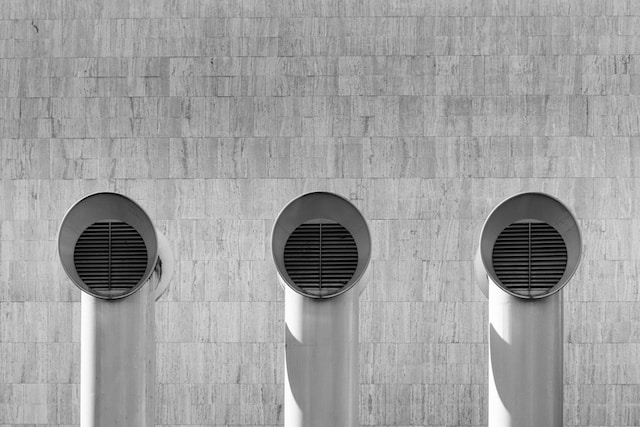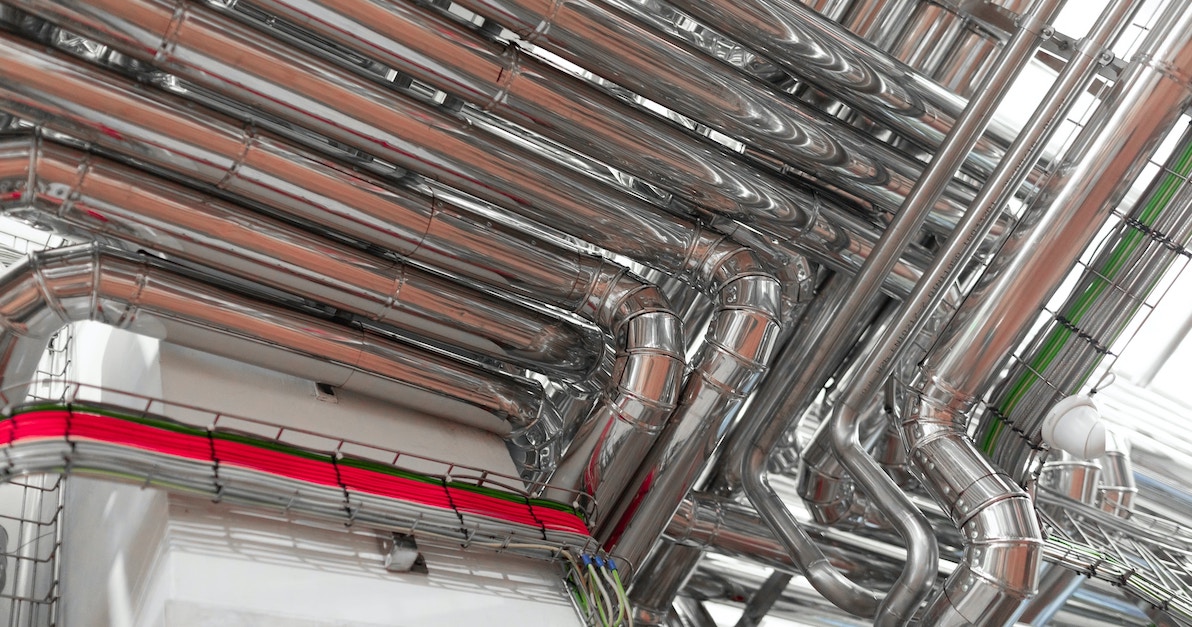A downflow HVAC system is a very important part of contemporary climate control solutions and it has gained widespread recognition across various sectors. Please visit www.creacon.se for more information on this topic. These systems excel in providing efficient heating, ventilation, and air conditioning, thereby ensuring comfortable and healthy indoor environments. They deliver conditioned air from the ceiling or upper portion of a room, establishing a gentle, controlled downward airflow. This design serves the dual purpose of optimal air distribution and precise temperature regulation. These systems excel at sustaining ideal temperatures, humidity levels, and air quality within enclosed spaces.
The technology underpinning downflow HVAC systems encompasses a diverse array of components. Central to their operation are air handlers, meticulously designed ductwork, strategically positioned vents, and state-of-the-art filtration systems.
Downflow HVAC system types
Downflow HVAC systems are available in a range of configurations, each tailored to specific requirements and settings.
Single-Zone systems A single-zone downflow HVAC system is meticulously designed to cater to smaller spaces, where precise climate control and adaptability are essential. These systems excel in providing localized temperature management, ensuring that individual rooms or areas maintain the desired comfort levels. By delivering conditioned air in a focused manner, single-zone systems are particularly effective in spaces where different areas have varying heating or cooling needs. They are a popular choice for residential applications, such as single-family homes and small offices, where simplicity and efficiency are paramount. The ease of installation and straightforward operation make single-zone downflow HVAC systems an attractive solution for those seeking cost-effective climate control.
Multi-Zone systems In contrast, multi-zone downflow HVAC systems are engineered to tackle more extensive and diverse spaces. These systems offer the luxury of personalised temperature control in multiple zones within a building. With the ability to independently regulate the climate in different areas, multi-zone systems are highly adaptable and cater to the unique requirements of each zone. This versatility is particularly valuable in larger residential properties, commercial buildings, and multi-story structures. Multi-zone downflow HVAC systems allow occupants to fine-tune the climate to their preferences, enhancing comfort and satisfaction. This flexibility and zoning capability contribute to energy efficiency by ensuring that only occupied areas receive conditioned air, reducing energy wastage.
Commercial vs. residential applications When considering downflow HVAC systems, distinguishing between commercial and residential applications is crucial due to the distinct design considerations associated with each sector.
In commercial settings, downflow HVAC systems play a vital role in creating comfortable environments for businesses and institutions. They are often employed in offices, retail spaces, restaurants, and various public facilities. The design and installation for commercial use require careful planning to accommodate the unique demands of high occupancy, varying usage patterns, and stringent regulatory requirements. Commercial downflow systems are typically integrated into larger HVAC systems that serve extensive areas, ensuring that climate control aligns with the specific needs of each space. These systems are not only geared towards comfort but also contribute to the overall efficiency and productivity of businesses.
Residential applications of downflow HVAC systems are characterised by their focus on creating comfortable living spaces. These systems are commonly found in single-family homes, apartments, and condominiums. The design considerations for residential downflow systems centre on optimising energy efficiency and comfort for homeowners. They are tailored to provide consistent temperature control throughout different rooms while being discreet and minimally intrusive. Residential downflow HVAC systems aim to enhance the quality of life for residents, ensuring that they can enjoy a comfortable and healthy indoor environment year-round.

A downflow HVAC system and the technology behind
The technological prowess of downflow HVAC systems extends beyond basic climate control:
Advanced filtration and purification mechanisms
The core of a downflow HVAC system lies in its advanced filtration and purification mechanisms, which are pivotal in elevating indoor air quality to superior levels. These systems leverage state-of-the-art filters and purification technologies, setting them apart as leaders in promoting a healthier living and working environment.
One of the standout features of downflow HVAC systems is their ability to meticulously combat allergens and pollutants that can compromise indoor air quality. Their advanced filtration systems are engineered to trap even the tiniest particles, including dust, pollen, pet dander, and microorganisms. The result is an environment with significantly reduced airborne contaminants, which is particularly beneficial for individuals with allergies, asthma, or other respiratory conditions.
The purification technologies integrated into these systems take indoor air quality to the next level. These technologies often include UV-C germicidal lamps and photocatalytic oxidation, which target and neutralise harmful microorganisms and volatile organic compounds (VOCs). By eradicating bacteria, viruses, and odour-causing substances, downflow HVAC systems create an environment that not only feels fresher but is also healthier.
Smart features and energy-efficient attributes
In addition to their prowess in air quality management, downflow HVAC systems, often recommended by HVAC consultants, shine in the realm of smart features and energy efficiency. These systems are designed with an eye towards the future, incorporating innovative technologies that maximise performance while minimising their environmental footprint.
One of the standout features is their integration with smart thermostats. This synergy allows for precise and intelligent temperature control, adapting to changing conditions and occupancy patterns. Smart thermostats enable homeowners and facility managers to fine-tune climate settings remotely, providing unprecedented convenience and control. Furthermore, they facilitate energy savings by optimising heating and cooling cycles, ensuring that energy is used efficiently to maintain the desired comfort level.
Programmable settings are another hallmark. These systems empower users to customise temperature and ventilation schedules, aligning them with specific needs and preferences. Whether it’s adjusting temperatures for different times of day or implementing setback periods when spaces are unoccupied, programmable settings contribute significantly to energy conservation.
Overall, a downflow HVAC system is not just about climate control; it represents a holistic approach to creating healthier and more sustainable indoor environments. Their cutting-edge filtration, purification, and smart technologies ensure that indoor air is of the highest quality, while their energy-efficient attributes contribute to both cost savings and a reduced environmental impact.

System applications in various industries
Downflow HVAC systems find their calling in a diverse array of industries. In healthcare facilities, these systems are integral to patient comfort and the maintenance of stringent infection control standards. Data centers rely heavily on precise temperature control to safeguard sensitive equipment and optimize energy usage. Retail stores benefit from downflow systems by providing customers with a comfortable shopping environment, contributing to increased sales. Educational institutions recognize the importance of conducive learning environments, with Downflow HVAC systems playing a pivotal role in ensuring students’ well-being and academic performance.
Downflow HVAC system – Related topics
While downflow HVAC systems hold centre stage, it’s worth considering other HVAC configurations such as upflow and horizontal systems, each with its unique advantages and applications. Ductless Mini-Split Systems, as alternatives to traditional ducted systems, are gaining popularity for their flexibility and efficiency. Exploring synergies between downflow HVAC systems and energy-efficient building design offers insights into creating sustainable and eco-friendly structures. Finally, comprehensive strategies for managing indoor air quality extend beyond the capabilities of HVAC systems alone, encompassing holistic approaches to ensure clean and healthy indoor environments. Drawing on insights from authoritative government agencies, industry experts, and esteemed organizations, this exploration sheds light on downflow HVAC systems and their indispensable role in modern living and working environments. These systems not only enhance comfort but also champion energy conservation and the promotion of healthier indoor air quality.



